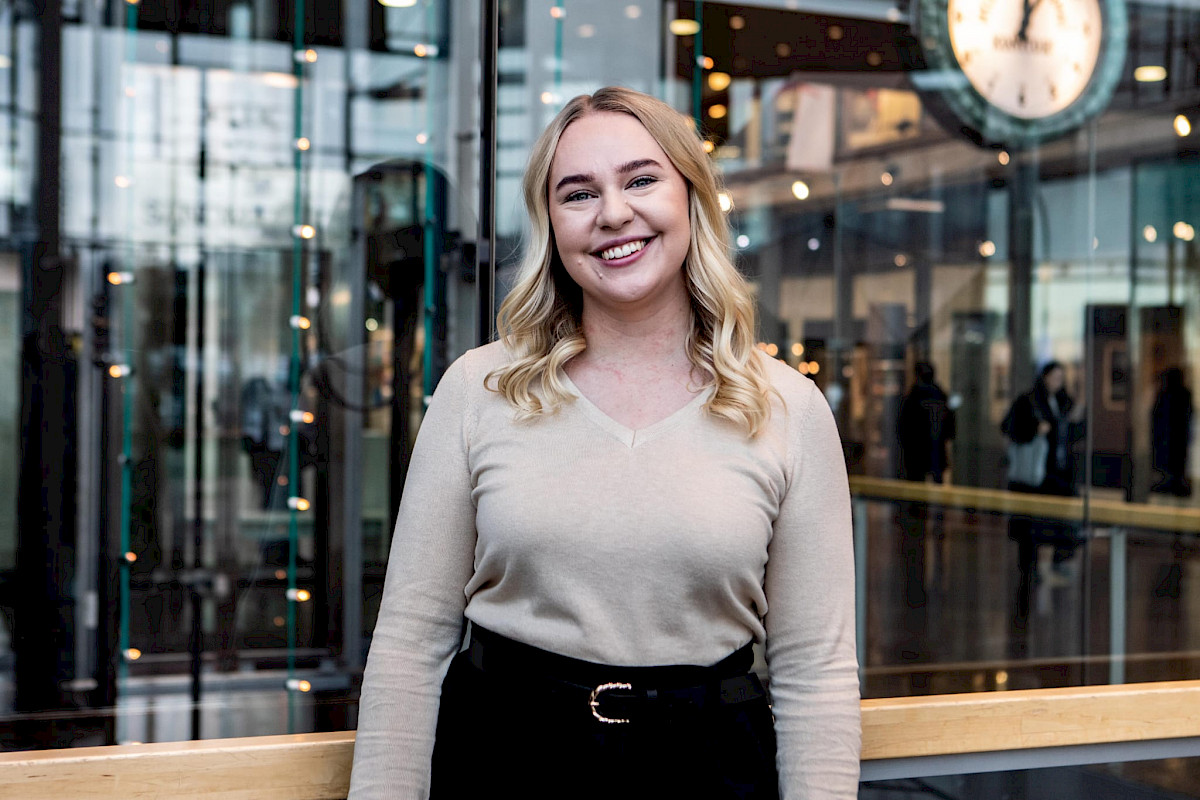Interview with SAMOK Chair Julia Väänänen: UAS students are building the future of working life
25.9.2025

Who are you and what do you do?
I’m Julia Väänänen, and I serve as the Chairperson of the Union of Students in Finnish Universities of Applied Sciences, SAMOK ry. That means I get to represent all UAS students in Finland.
What and where do you study?
I study in the nursing degree program at Tampere University of Applied Sciences and have been studying for quite a few years already!
Why did you originally apply to nursing school?
Originally, I had a vision of studying nursing and then continuing my education further, so that I could work, for example, as a teacher in a university of applied sciences. It was already quite clear to me when I was younger that I wanted to enter the health care field, and that’s where I ended up.
Would you apply to nursing again?
My career plans have definitely changed along the way. At the same time, I can say that nursing is a very meaningful field, and it also provides a solid foundation for further studies, so I don’t regret my choice at all. I’m not sure if I’d make the same choice again today, but I’m satisfied with the decision I made when I was younger.
Can you tell us what the dual model is?
Absolutely! This is one of my favorite topics. In Finland’s education system, the dual model means that we have two types of higher education institutions. We have research universities, and then we have universities of applied sciences (UAS). In the dual model, both have their own distinct missions. While universities focus on science, research, and producing researchers, UAS are tasked with responding to the needs of working life, engaging in regional development, and bringing innovations and applied research into practical use in workplaces.
Why shouldn’t we just educate everyone at research universities?
I’d reflect on the reasons for their existence. We have different missions. At UAS, studies are very work-oriented and carried out in close cooperation with employers. That’s why I see that both types of institutions clearly have their own roles in the system.
It’s also worth noting that UAS education is extremely efficient. Roughly speaking, with about one-third of the total higher education budget, we produce almost two-thirds of the graduates. So UAS education is very effective and plays a crucial role in driving Finnish society forward.
What are the biggest challenges UAS currently face?
One major challenge is funding. In about ten years, the cost per degree in UAS has nearly halved, meaning less money is spent per student. This financial strain has a wide impact on the quality of education, what can be done, and how many students can be trained. That’s definitely the number one challenge.
From the student perspective, financial difficulties are also very serious. Most recently, the shift from housing allowance to the student financial aid’s housing supplement has in many cases significantly reduced students’ disposable income. On top of that, the real value of student financial aid has weakened over the years. This means students have to work more alongside their studies, but in a difficult job market that’s not simple either.
Why do we aim for a higher level of education even though unemployment has risen sharply?
The goal is that up to 50% of each age group would complete higher education – an ambitious target that we’re still far from reaching. The reason is that working life is constantly changing and has transformed a lot in recent decades. There is an increasing demand for experts and workplace development, while traditional manual jobs are decreasing. That means we need more higher education graduates.
There’s also the perspective of economic growth. Research shows that the more highly educated people a country has, the more it contributes to economic growth. That’s certainly a big motivator as well. Here, UAS play a huge role, since such a large share of graduates come from us. Right now, there are about 175,000 UAS students in Finland, which is a lot.
How can we improve the quality of higher education?
We already mentioned funding, which is of course key – but money alone doesn’t solve everything. I see tripartite cooperation as crucial for improving education quality: teachers, students, and institutions all working together. Students are the experts of their own learning, and it’s incredibly important to listen to their voices in decision-making about education. I encourage every UAS to have broad discussions about current needs and challenges and solve them together.
How can the higher education funding model be improved?
At the moment, the model rewards institutions mainly based on completed degrees. That’s problematic, because it means funding comes only if students graduate on time. We think this needs to be rethought. Maybe a model based on completed credits would work better.
Currently, the model also strongly rewards “first-time applicants,” which is another challenge. We believe the first-time quota system should be adjusted. For example, allowing students with under 60 credits to still retain their first-time status. That would ease some pressure on young people. In general, the model should shift away from being overly results- and performance-driven.
What else does SAMOK want to influence?
Right now, a national vision process for higher education and research is underway, looking ahead to 2040. That’s incredibly important, and we’re actively involved in bringing the student perspective into what higher education should look like over the next 15 years.
We’re also deeply involved in the ongoing reform of student financial aid, pushing for a system that better supports students and their studies. Another key focus is international students, their challenges, financial situation, and integration into Finnish society. We want to ensure they can stay in Finland to work and truly become part of our society.
How does upper secondary education affect the whole picture?
As intake numbers rise, more and more students with diverse backgrounds are entering higher education. Currently, up to half of UAS students come from vocational school backgrounds, bringing valuable work experience and subject knowledge with them which is a real strength. At the same time, we recognize that this diversity requires more guidance, more individualized solutions, and more resources. Our student population is becoming increasingly diverse, which is an asset, but it also calls for investment.
What final message would you like to share with our members?
I want to wish everyone joy in studying and passion for the cause. We’re doing everything we can for a better future for students – and that’s incredibly important.

